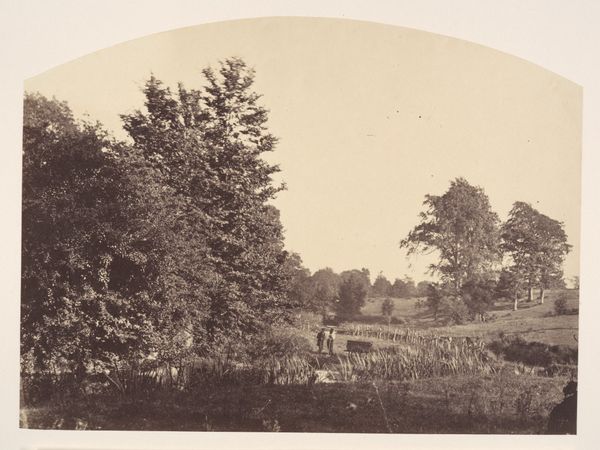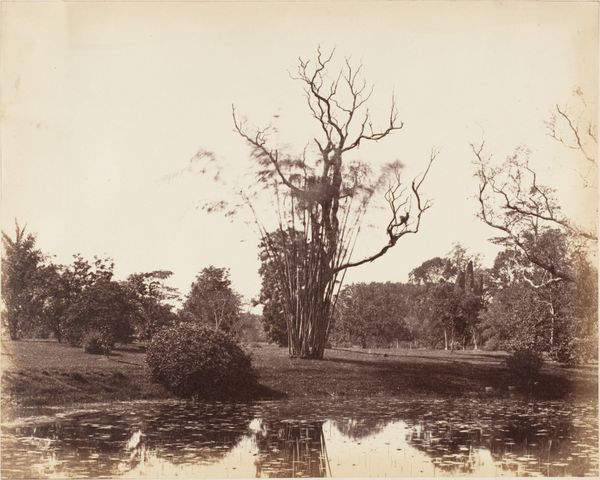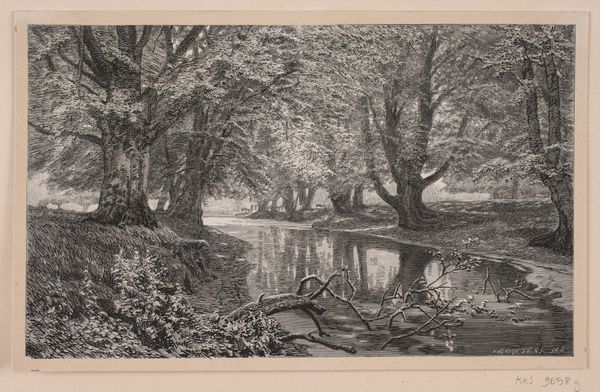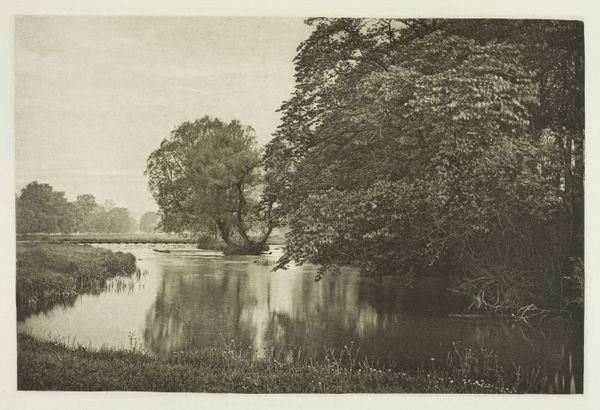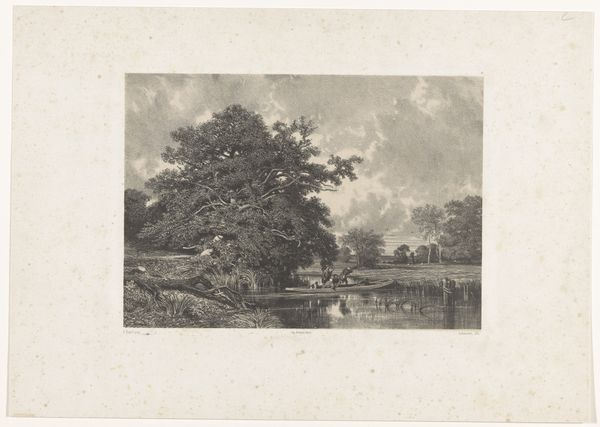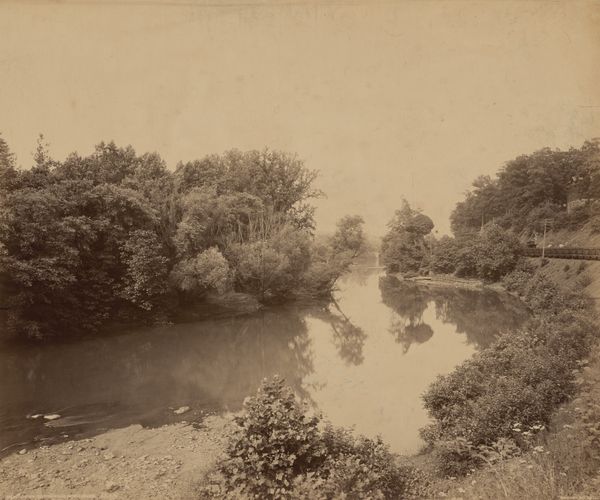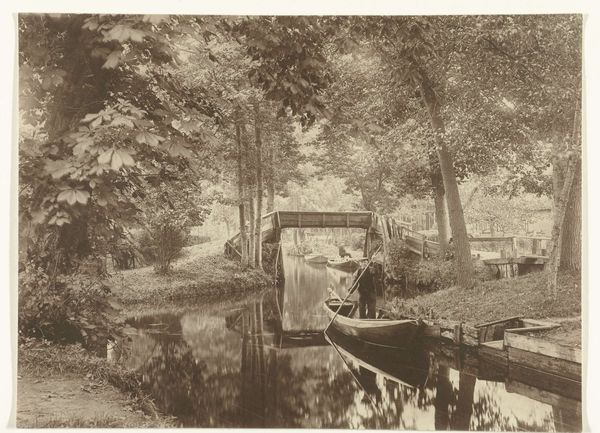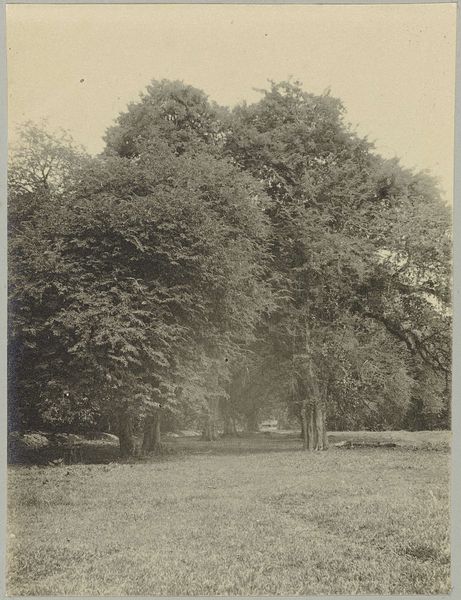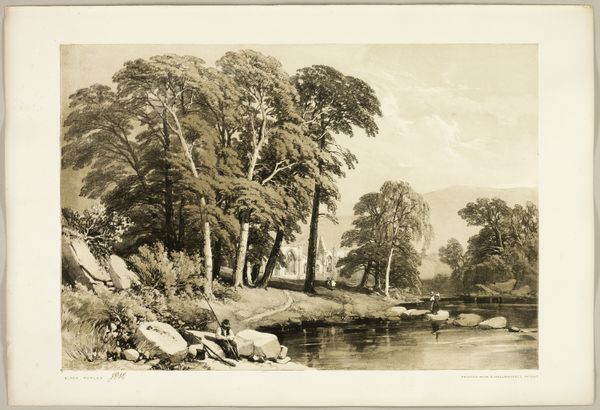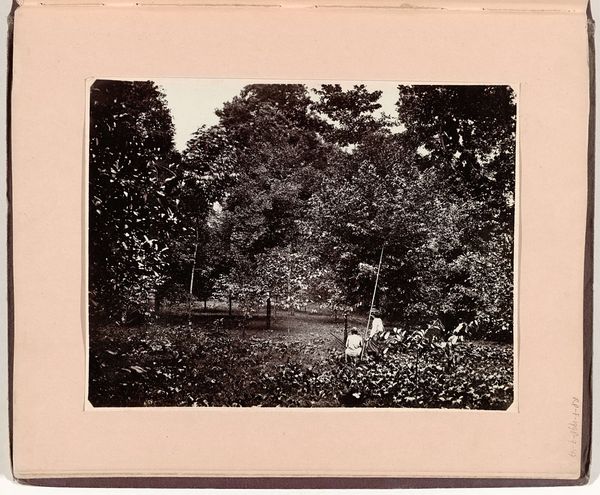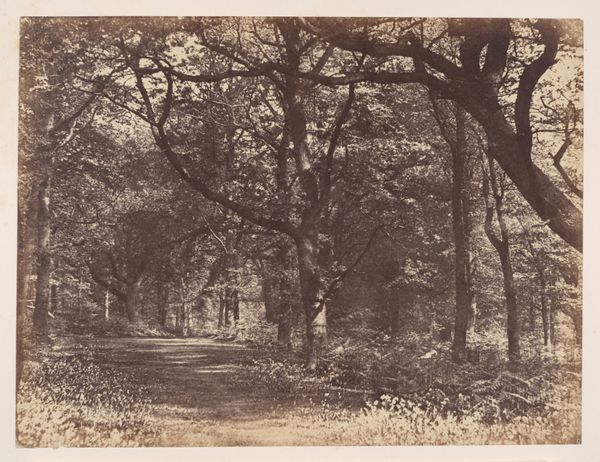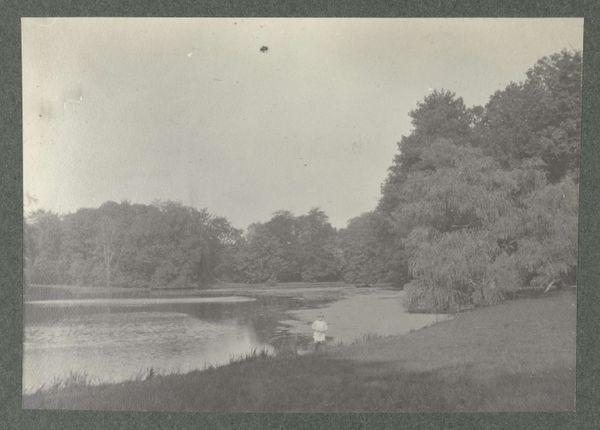
Dimensions: height 223 mm, width 287 mm, height 272 mm, width 378 mm
Copyright: Rijks Museum: Open Domain
Editor: So, this is "Woodland near Clifton Grove, Nottinghamshire," taken by George Bankart, likely between 1855 and 1890. It's an albumen print, so the sepia tones really give it this aged, almost dreamlike quality. I find myself getting lost in the density of the trees, but what's your take? How do you interpret this work? Curator: This photograph, while seemingly a straightforward landscape, can be viewed as a document reflecting Victorian society's evolving relationship with nature, particularly within the context of industrial expansion. What do you observe about the way nature is being portrayed here, especially when you compare it to more romantic paintings of the same era? Editor: Well, it doesn't feel as overtly "grand" as some landscape paintings I've seen. It's more intimate, almost like a personal observation rather than a staged spectacle. Curator: Precisely! This "intimacy," as you put it, complicates the common narrative of industrial progress as simply conquering nature. Bankart seems to suggest a co-existence, a negotiation. The forest isn't just scenery; it's a space that retains its own agency. How might this relate to Victorian anxieties about urbanization and the loss of traditional ways of life? Editor: I hadn't thought of it that way, but it makes sense. Maybe it’s a quiet rebellion against the rapidly changing world. Almost a way to preserve what's being lost. Curator: Consider the medium itself – photography. Unlike painting, it was seen as a more "objective" form of representation. Could this photograph, therefore, be interpreted as an attempt to capture a specific reality, a moment of authentic, untouched nature amidst increasing artifice? Editor: I see what you mean. The photo offers more than a literal rendering of trees; it offers insight into a critical era of conflicting attitudes regarding industrialization, gendered labor, and race relations, revealing anxieties regarding identity, and social issues that have remained ever present since that moment in time. Thanks so much for shedding light on all this! Curator: My pleasure. Seeing art this way helps us consider the social function of these materials and artistic efforts across time.
Comments
No comments
Be the first to comment and join the conversation on the ultimate creative platform.
